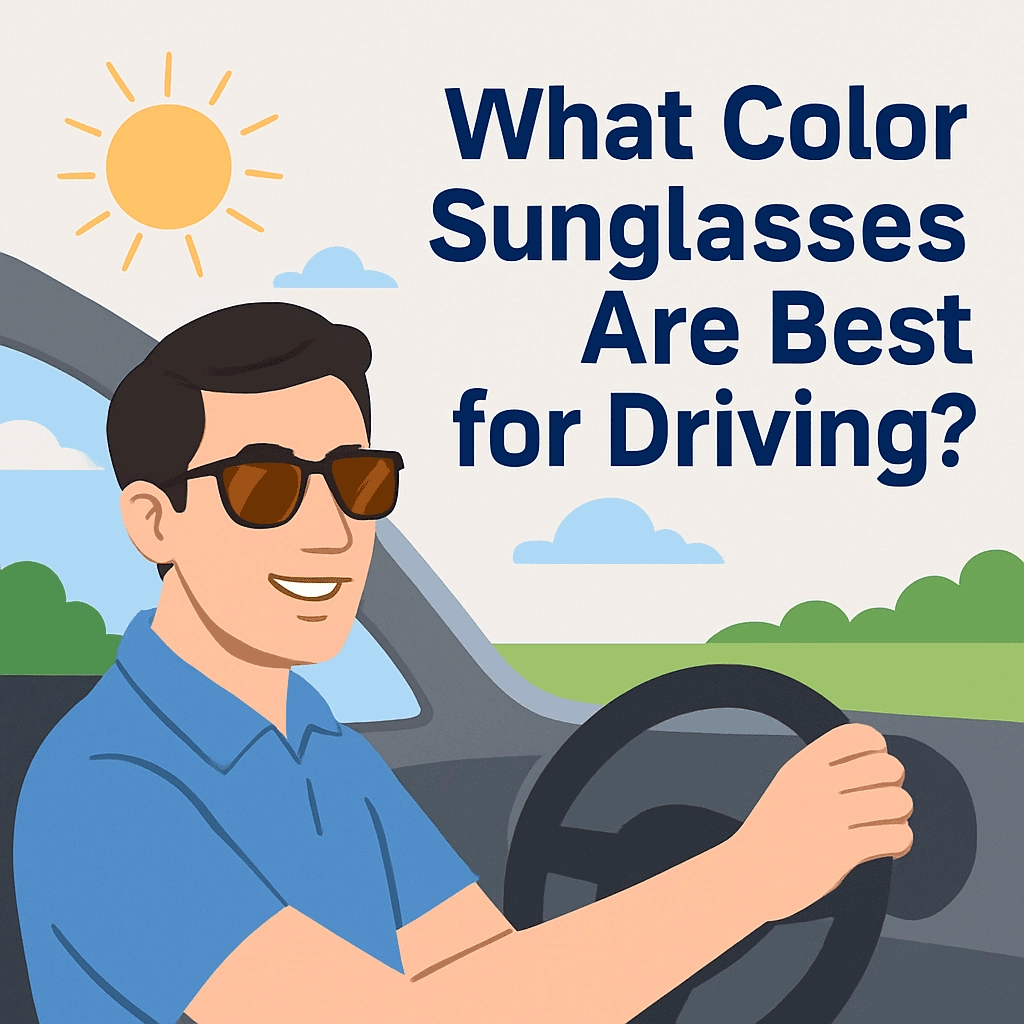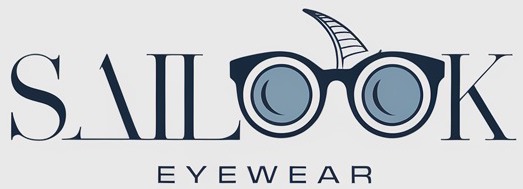Choosing the right sunglasses for driving is essential to enhance visibility, reduce glare, and ensure a comfortable driving experience. In this article, we’ll explore which sunglass colors are best suited for various driving conditions, and how the right lenses can improve your safety on the road.

1. What Are the Best Sunglass Colors for Driving?
Choosing the best lens color for driving can significantly impact your ability to see clearly and react to road hazards. The most effective colors for driving include brown, amber, and gray. Each lens color serves a specific purpose and works best in different lighting conditions.
Table 1: Best Sunglass Colors for Different Driving Conditions
| Lens Color | Best For | Benefits |
|---|---|---|
| Brown | Bright sunny conditions | Enhances contrast and depth perception |
| Amber | Low light or foggy conditions | Increases contrast and visibility in low light |
| Gray | Bright sunny conditions | Reduces overall brightness without distorting color |
The benefits of brown and amber lenses are particularly noticeable during the daytime when the sun is bright and visibility can be challenging. Gray lenses are better for general brightness reduction without altering the natural colors of the surroundings.
What’s the real story? It’s important to understand that each lens has specific advantages. A pair of brown lenses may be ideal for driving in the daytime, but they might not be the best choice for night driving.
2. Why Is Lens Color Important for Driving?
The lens color you choose plays a crucial role in how effectively you can see while driving. A good pair of driving sunglasses does more than just protect your eyes from UV rays; it enhances contrast, reduces glare, and helps improve your overall vision.
Table 2: Importance of Lens Color for Driving
| Lens Color | Effect on Driving | Advantages |
|---|---|---|
| Brown | Enhances contrast and depth | Helps with road signs, obstacles, and clarity |
| Amber | Improves vision in low-light | Best for cloudy or foggy conditions |
| Gray | Reduces brightness | Prevents eye strain during bright sunlight |
The right color helps you make better decisions by making important details on the road stand out. For example, amber lenses help drivers spot animals and other obstacles more easily during dusk or dawn.
But here’s the kicker—the right lens color can also help reduce eye strain during long drives. If you’re driving on a bright day, gray lenses can reduce the intensity of sunlight, reducing the amount of squinting required to keep your eyes comfortable.
3. What Are the Different Types of Sunglass Lenses for Driving?
Sunglass lenses come in various types, with polarized lenses being the most commonly recommended for driving. Polarized lenses reduce glare from reflective surfaces, such as wet roads or other vehicles’ windows, improving visibility.
Table 3: Types of Sunglass Lenses for Driving
| Lens Type | Best For | Key Benefits |
|---|---|---|
| Polarized | Glare reduction | Reduces glare from water, roads, and other reflective surfaces |
| Non-Polarized | General use | Provides clear vision without glare reduction |
| Photochromic | Changing light conditions | Adjusts tint based on light exposure |
Polarized lenses are ideal for reducing glare from reflective surfaces, making them a must-have for daytime driving in bright conditions. Non-polarized lenses are less specialized but can still be used for general protection. Photochromic lenses, which adjust to changing light conditions, are another option but may not be as effective for glare reduction.
Ready for the good part? Polarized lenses are especially beneficial for drivers who frequently encounter bright, sun-reflective surfaces, such as roads after rain or driving towards the sun.
4. How Do Polarized Lenses Improve Driving Safety?
Polarized lenses are specifically designed to cut out glare caused by reflective surfaces. Whether it’s the sun reflecting off water or shiny road surfaces, polarized lenses can help you see clearly without the distractions of bright light.
Table 4: How Polarized Lenses Improve Visibility
| Condition | Polarized Lenses Benefit | Effect on Visibility |
|---|---|---|
| Bright sunlight | Reduces glare | Enhances visibility of road signs and obstacles |
| Wet roads | Cuts out reflections | Reduces glare from puddles or water on the road |
| Oncoming headlights | Minimizes night glare | Reduces eye strain when driving at night |
The ability of polarized lenses to reduce glare is crucial when driving on sunny days or at night. This added clarity can prevent accidents caused by temporary vision impairment.
What’s the real story? Glare from reflective surfaces can make it difficult to see road signs, hazards, or vehicles, leading to potential accidents. Polarized lenses solve this problem by eliminating the excess light that causes eye strain.
5. What Are the Best Lens Colors for Daytime Driving?
Daytime driving presents challenges like bright sunlight, which can cause glare and reduce visibility. Choosing the right lens color can help mitigate these issues.
Table 5: Best Lens Colors for Daytime Driving
| Lens Color | Best For | Benefits |
|---|---|---|
| Brown | Bright sunlight | Enhances contrast and sharpens road details |
| Gray | Bright sunlight | Reduces overall brightness without color distortion |
| Copper | High contrast areas | Ideal for overcast or mixed lighting |
Brown lenses enhance contrast, which is useful for highlighting road signs and markers during bright, sunny conditions. Gray lenses provide an all-around solution for bright sunlight by reducing glare and maintaining a natural view. Copper lenses are effective for areas with high contrast or mixed lighting, making them ideal for overcast days.
This is where it gets interesting… For those who drive long distances during the day, wearing lenses that improve contrast and reduce glare can make a noticeable difference in comfort and safety.
6. What Are the Best Lens Colors for Night Driving?
Night driving presents a unique set of challenges, particularly when it comes to visibility. Choosing the right lens color for driving at night can help improve contrast and prevent eye strain.
Table 6: Best Lens Colors for Night Driving
| Lens Color | Best For | Benefits |
|---|---|---|
| Yellow | Low light or nighttime | Enhances contrast in low-light conditions |
| Clear | Nighttime | Reduces glare and increases comfort |
| Amber | Night driving with some light | Improves contrast without distorting colors |
Yellow lenses are excellent for improving contrast in low-light situations, such as during the night or in overcast conditions. Clear lenses, while providing no additional color enhancement, help reduce glare and make night driving more comfortable. Amber lenses improve contrast slightly, making them an effective choice for areas with some ambient light.
But here’s the kicker—night driving sunglasses should not be too dark. Lenses that are too dark can obstruct your vision, making it even harder to see during the night.
7. How Do Sunglasses Protect Your Eyes While Driving?
When you’re behind the wheel, your eyes are exposed to many environmental factors, from harmful UV rays to intense wind and glare. Proper sunglasses can protect your eyes from these elements, reducing eye fatigue and keeping you safe.
Table 7: Eye Protection Benefits of Sunglasses
| Protection Type | Benefit | Impact on Driving |
|---|---|---|
| UV Protection | Shields eyes from harmful ultraviolet rays | Prevents long-term eye damage from constant UV exposure |
| Reduces Eye Strain | Relieves stress caused by prolonged exposure to bright lights | Allows for clearer vision during long drives |
| Protection from Wind | Blocks wind, dust, and other irritants | Keeps eyes comfortable and focused |
What’s the real story? UV protection is crucial, especially during long drives, where constant exposure to the sun can lead to permanent damage. Sunglasses can also help reduce the discomfort caused by dry eyes or irritants like dust or wind while driving at higher speeds.
8. Can Certain Lens Colors Help with Road Signs and Traffic Signals?
While driving, recognizing road signs and traffic signals quickly is vital. The right lens colors can help enhance the visibility of these signs and signals, making your drive safer and more efficient.
Table 8: Lens Colors and Traffic Sign Visibility
| Lens Color | Best For | Impact on Traffic Sign Visibility |
|---|---|---|
| Yellow | Night driving or foggy conditions | Enhances contrast, making road signs stand out |
| Amber | Overcast and dusk driving | Improves visibility of signs in low-light |
| Gray | Bright daylight | Reduces glare while maintaining natural color |
This is where it gets interesting… Lens colors like yellow or amber are beneficial in low-light conditions like twilight or fog, as they improve contrast and help you spot traffic signs from a distance. On the other hand, gray lenses work well in bright sunlight by minimizing glare but preserving the true color of road signs and signals.
9. Are There Lens Colors That Work Best for Specific Weather Conditions?
Weather conditions play a major role in your driving experience. Different lens colors can help enhance visibility, whether you’re driving in bright sunshine, fog, or rainy conditions.
Table 9: Lens Colors for Specific Weather Conditions
| Weather Condition | Best Lens Color | Benefit |
|---|---|---|
| Bright sunlight | Gray, Brown | Reduces glare and enhances clarity |
| Overcast skies | Yellow, Amber | Increases contrast and sharpens details in low-light conditions |
| Foggy weather | Yellow, Gold | Improves depth perception and visibility in foggy conditions |
| Rainy conditions | Light Amber | Reduces glare from wet surfaces, improving clarity |
Ready for the good part? Yellow and gold lenses are particularly effective during foggy weather, where they increase contrast and help drivers see further ahead. On bright, sunny days, gray or brown lenses perform best by reducing overall brightness without distorting color.
10. How to Choose the Right Sunglasses Based on Your Driving Needs?
Selecting the right sunglasses is not just about the color but also the specific needs of the driver. Some may prioritize comfort, while others may require better glare protection for long drives.
Table 10: Choosing Sunglasses Based on Driving Needs
| Need | Best Lens Type | Reason |
|---|---|---|
| Long road trips | Polarized lenses, gray | Reduces eye strain, glare, and enhances comfort |
| Frequent night driving | Yellow or clear lenses | Improves contrast and depth in low-light conditions |
| Driving in bright sun | Polarized lenses, brown | Reduces glare while maintaining clarity |
| Mixed weather conditions | Amber, photochromic | Versatile, adjusts to varying light conditions |
What’s the real story? Drivers who often travel long distances will benefit from polarized lenses and gray lenses, which reduce glare and prevent eye fatigue. For frequent nighttime driving, yellow or clear lenses are ideal to increase contrast without sacrificing visibility.
11. What Are the Drawbacks of Certain Lens Colors for Driving?
While sunglasses are crucial for driving, some lens colors may have limitations that can affect visibility in certain conditions. Choosing the wrong lens color can sometimes distort natural color perception or reduce clarity.
Table 11: Drawbacks of Certain Lens Colors
| Lens Color | Possible Drawback | Best Avoided In |
|---|---|---|
| Brown | Can distort colors in low-light conditions | Nighttime driving |
| Gray | Reduces brightness but may make it hard to see in dark conditions | Low-light driving |
| Yellow | Can over-enhance contrast in bright conditions | Bright, sunny days |
But here’s the kicker—too much contrast can be problematic. Yellow lenses, for example, are perfect in low-light conditions, but they might make things too bright when driving during daylight.
12. Can You Wear Sunglasses During Nighttime or in Low-Visibility Conditions?
Sunglasses are generally not recommended for nighttime driving, but certain lens colors can be helpful in low-visibility conditions, such as fog or rain.
Table 12: Sunglasses for Low-Visibility Conditions
| Condition | Best Lens Color | Effectiveness |
|---|---|---|
| Nighttime driving | Yellow, clear | Enhances contrast in low-light but should be avoided in full darkness |
| Foggy conditions | Yellow, amber | Increases visibility by enhancing contrast and depth perception |
| Rainy weather | Light amber | Reduces glare and enhances road detail visibility |
Ready for the good part? While standard sunglasses aren’t ideal for nighttime driving, using yellow or clear lenses can help in situations with low visibility, like fog or rain. They enhance contrast without making everything too dark.
13. How Do Prescription Sunglasses Factor into Driving?
Prescription sunglasses provide all the benefits of regular sunglasses but with the added benefit of vision correction. They can be especially helpful for drivers who require corrective lenses but still need UV protection and glare reduction.
Table 13: Prescription Sunglasses for Driving
| Feature | Benefit | Ideal For |
|---|---|---|
| Prescription Lenses | Combines vision correction with UV protection | Drivers who need corrective lenses |
| Polarization | Reduces glare from reflective surfaces | Drivers who spend a lot of time on the road |
| UV Protection | Protects from harmful ultraviolet rays | Long drives, outdoor driving |
What’s the real story? Prescription sunglasses allow drivers with vision issues to enjoy the same glare reduction and eye protection benefits, making them a smart investment for long drives and everyday commutes.
14. What Are the Best Sunglasses for Long Road Trips?
Long road trips require sunglasses that provide maximum comfort, protection, and clarity. Sunglasses that reduce glare and strain over long hours are key to maintaining focus on the road.
Table 14: Best Sunglasses for Road Trips
| Sunglass Feature | Best For | Reason |
|---|---|---|
| Polarized lenses | Drivers who are on the road for long hours | Reduces glare and enhances visual clarity |
| UV protection | All drivers | Prevents long-term eye damage |
| Lightweight frames | Long-distance drivers who need comfort | Reduces fatigue during extended driving |
This is where it gets interesting… Polarized lenses are particularly beneficial for long road trips as they reduce glare from reflective surfaces, such as wet roads or other vehicles’ windows. Additionally, lightweight frames add comfort, making long hours on the road less tiring.
15. How to Maintain and Care for Your Driving Sunglasses?
Caring for your sunglasses is key to ensuring their longevity and optimal performance. Regular cleaning and proper storage can help maintain their effectiveness, especially for polarized lenses that are crucial for safe driving.
Table 15: Sunglass Care Tips
| Care Tip | Description | Benefit |
|---|---|---|
| Clean lenses regularly | Use microfiber cloths and lens cleaning solutions | Prevents scratches and ensures clear vision |
| Store in a case | Keep sunglasses in a protective case when not in use | Prevents damage to frames and lenses |
| Avoid extreme heat | Do not leave sunglasses in hot environments, such as a car | Prevents warping and damage to lens coatings |
What’s the real story? Taking care of your sunglasses ensures that they perform well over time, maintaining their effectiveness for glare reduction and UV protection. Regular cleaning also helps prevent build-up that could distort your vision.
Conclusion
In conclusion, selecting the right sunglasses for driving is crucial for enhancing visibility, reducing glare, and ensuring comfort on the road. The best lens colors—brown, amber, and gray—offer specific benefits based on the driving conditions you encounter. Whether you’re facing bright sunlight, fog, or night driving, the right lenses can significantly improve your driving experience by making road signs, obstacles, and traffic signals easier to spot.
Polarized lenses, in particular, provide excellent protection against glare, while prescription sunglasses offer the added benefit of vision correction. It’s important to choose lenses that suit your specific needs, whether it’s long road trips, low-light conditions, or simply reducing eye strain during your daily commute.
By maintaining and caring for your sunglasses, you ensure they continue to provide these benefits for the long term. Investing in the right pair of sunglasses is an easy yet effective way to drive more safely and comfortably.
FAQ Section
Q1: What are the best sunglasses for driving?
The best sunglasses for driving are those with polarized lenses in colors like brown, amber, or gray, which reduce glare and improve visibility.
Q2: How do polarized lenses help with driving?
Polarized lenses reduce glare from reflective surfaces, such as water, wet roads, or windows, improving clarity and safety while driving.
Q3: Can sunglasses be worn at night while driving?
Sunglasses are generally not recommended for night driving, as they can reduce visibility. Clear or yellow lenses are better suited for nighttime driving.
Q4: What lens colors are good for overcast weather?
Gray or light gray lenses are ideal for overcast conditions, as they reduce brightness while maintaining natural color perception.
Q5: Are prescription sunglasses good for driving?
Yes, prescription sunglasses are beneficial for driving, as they offer vision correction alongside the benefits of glare reduction and UV protection.

